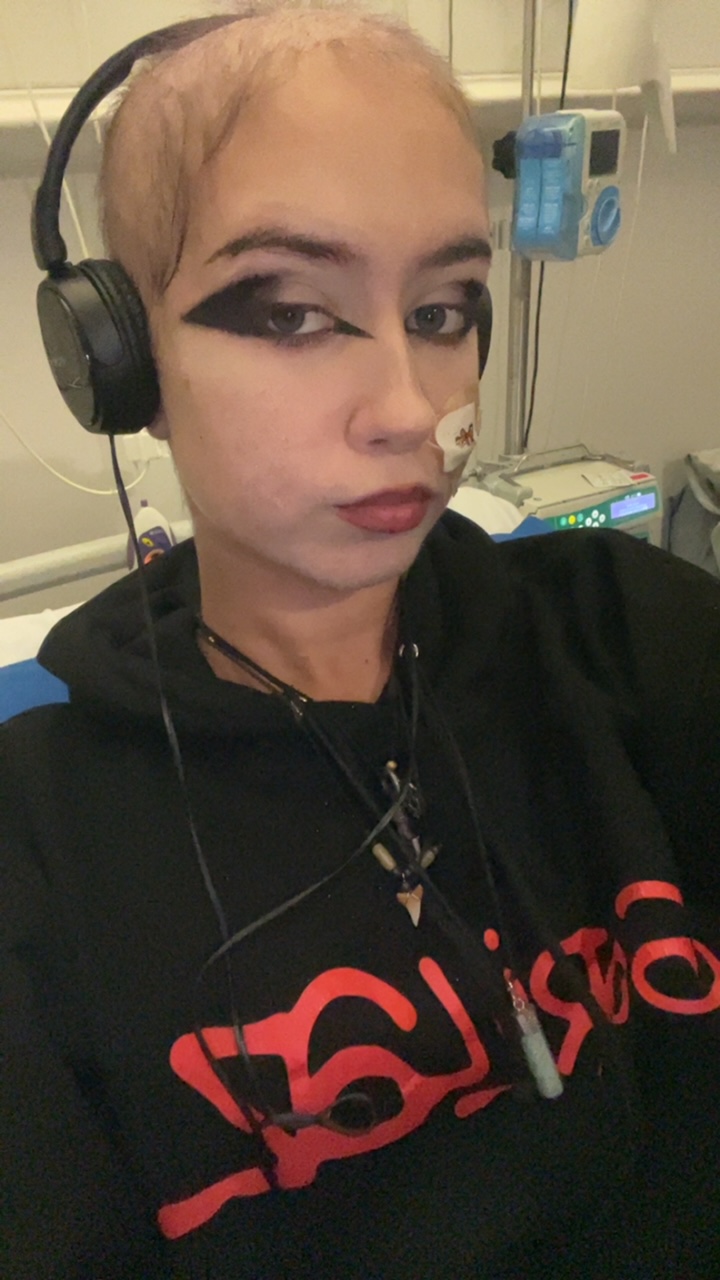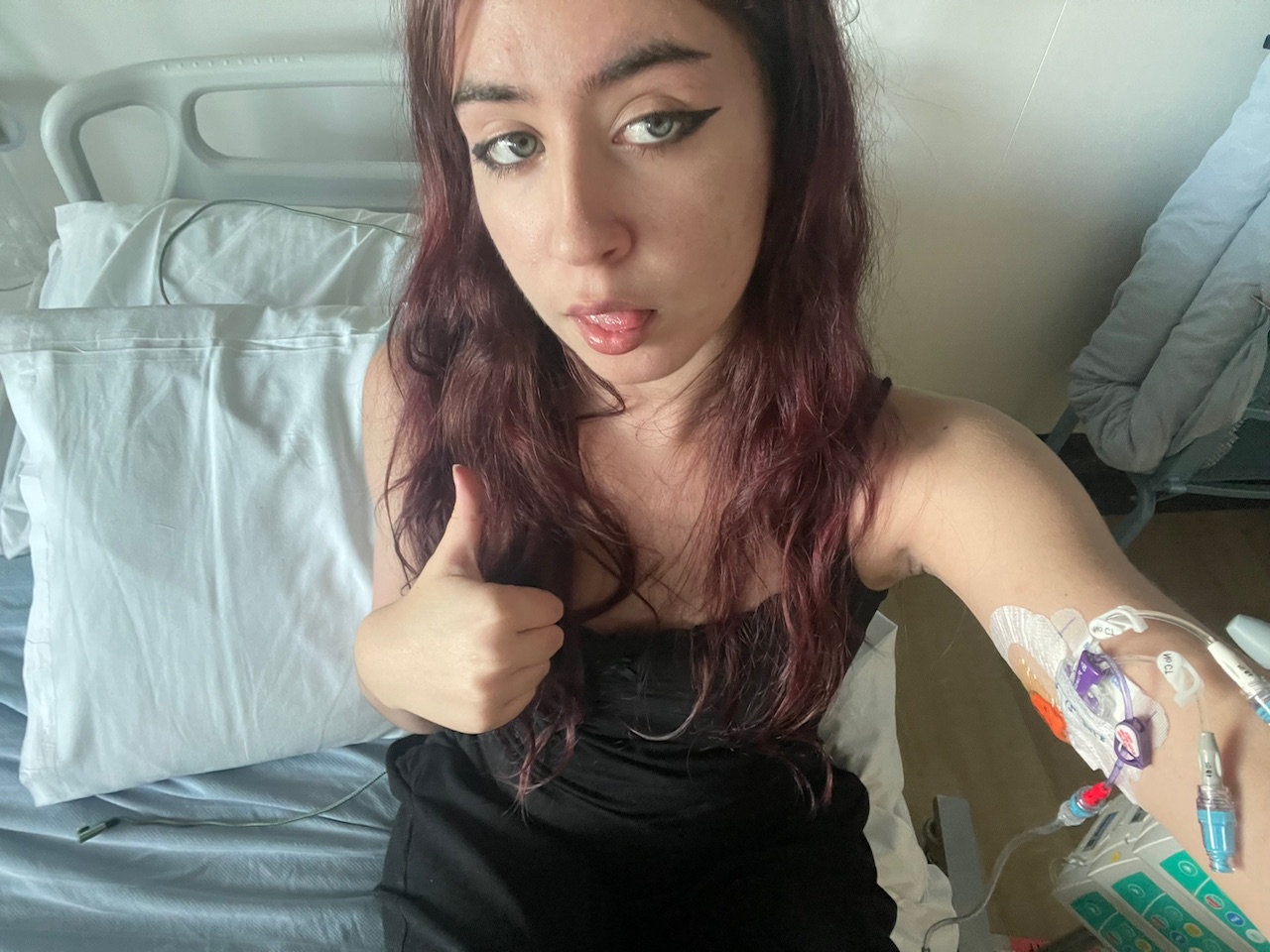Shannon and Wendy's story (March 2024)
Shannon and her mum, Wendy, each share their perspective on their family's journey with CGD and bone marrow transplant (BMT)
Shannon's story: How to live with and scold CGD in your late teens.
Having a chronic illness during your late teens is never easy. Particularly an immunodeficiency disorder, which at times can make you look completely fine one week and then the next you’re on your way to the local hospital for an overnight stay. From my understanding of CGD, many cases are with young children, so living with it during my teens has felt like a very niche experience at times, particularly as a girl. My type of CGD is a p40 deficiency which is the rarest form, so this also added on to the lack of relatability I’ve felt so far in my CGD journey. But I hope that by sharing a bit of my story, it will help other young people know that you’re never alone and it’s okay to feel overwhelmed with it all. Who could blame us?
For most of my life my diagnosis was Crohn’s disease, due to inflammation in my bowel and stomach (at times) and mouth ulcers picked up by my dentist as a toddler. A decade of immunosuppressants to dampen what they thought was an overactive immune system, and many trips to routine appointments. The usual. However, during March 2021, I was admitted into hospital very ill. I often reminisce back to a memory of my mum and I at the end of that long and strenuous two and a half weeks, walking back from Queen's Medical Centre’s staff roof garden joking between us about whether I had Crohn’s or not. As we walked onto the ward and looked down the corridor to the outside of my room, there was a group of new faces waiting for my return; one of them being who I know now as one of my main immunologists. “So, here’s a diagram of your immune cells and bacteria”.
I’ve spent the last three-ish years attempting to come to terms with a new diagnosis, which seems easy because a portion of that process is reading all the lovely, fabulous paperwork about the condition. But if you combine that part with the emotional rollercoaster one must go through when relearning their body’s mechanisms and all the questioning of the past decade of their medical life, plus trying to continue living as normal of a life as you can at 15, 16, 17 and now 18, it suddenly seems like the biggest thing your life has ever thrown at you. Now, let’s not forget the big factor here. CGD is not one to wait for you to emotionally process everything and then turn up at its door saying, “Ok! I’m ready!”.

Whilst writing this blog, I’m currently recovering from my bone marrow transplant (BMT), a known cure for CGD. It’s been a couple months since I’ve been discharged and so far things are going well. I don’t remember the first discussions about having a BMT as well as I do that ward corridor, but what I do remember is the feeling of anticipation and dread before. It’s something you’re taught about in the conversation of cancer rather than an immunodeficiency, so it was interesting and promising to hear I could be cured. So far, they’ve done one cell pop test and my CGD is deemed to be gone. My BMT was eventually delayed a month and a bit because of, you guessed it, the star of the show: CGD! I ended up catching rhinovirus, COVID, and some other bacterial infections. It was almost like it was clinging on for one final time just to make a point. The chemo week went by ridiculously fast. After transplant, I was visited in hospital by the amazing CGD clinical nurse specialist, Helen, and we discussed some options about how the CGD Society can support me further in my recovery, which my mum speaks about below.
One aspect I’ll remember for life is going through IVF. All women or girls who must have chemo that will affect their fertility are given this option. One reason being I started the fertility injections on my 18th birthday. I can’t say that was on my list, but that’s just life. But also because of the feelings surrounding the three-week process and my age. It felt daunting and invasive, which conflicted with my understanding that it was so very important to give my future self a chance at having kids if I turned out to be infertile from the treatment. A particular issue that came up was the scans being internal. I’ve highlighted this aspect to encourage advocacy within anyone relating to this part of my story. After expressing to the IVF clinic that I wasn’t comfortable with the scans being internal, they happily opted to scanning through my abdomen instead. With my feedback, they are going to offer this option to all young patients. One thing I’ve learned from this is that advocating for myself was the best thing I could have done, rather than just ‘dealing with it’ as many of us chronic illness-havers are used to doing, and I hope this calms any worries some may have about the subject.

My experience summarised here may seem vastly negative but, to highlight an amazing thing that has come out of it, my hospital will now be testing any female paediatric gastro patients that come through their care to rule out any chance of it being mistaken for CGD. Up until this point only boys were being tested for CGD to rule it out, so this positive step will hopefully benefit many people. From what we’ve heard, it already has!
There’s still a lot of hurdles in my journey that I’ve got to go through, but I’m doing well. I hope what I’ve shared will help those reading, or at the very least provide entertaining ways to scold CGD to oblivion.
Wendy's story: Helping me to help you – a story of two sisters with a love of STEAM
As Shannon’s mum, I wanted to share my experiences, as I have two daughters in this story who epitomise just how courageous young people can be. They are showing a strong determination to live their best lives despite the harsh realities of living with chronic health issues and the impacts associated with this on others. No matter what the impacts have been, both girls have continued to pursue their passion for STEAM (STEM with Art thrown into the mix).
Shannon is an aspiring bioscientist with a passion for Biology, Chemistry and Drama. She is an inspiration to all young girls accessing the resources provided by Cosmic Superstars to follow your dreams no matter what. Tamsin is an amazing Fine Art and Science student who has had to witness and live with the impact of CGD on Shannon’s life, and more recently, saved her sister’s life by donating her bone marrow to Shannon as part of a bone marrow transplant (BMT).
As discussed in Shannon’s story above, Shannon has an inherited genetic disorder called Chronic Granulomatous Disorder (CGD). This means she has a deficient immune system which can lead to lots of health problems and many hospital appointments across several different hospitals, as her condition is extremely rare and complex. This has meant she has missed out on some schooling over the last few years. But even on days when she was not feeling 100%, she has gone in and continued to be a motivated and determined student. She has recently undergone BMT which was a high-risk procedure. Despite this, she continued to access her lessons using an amazing technology enabler in the form of an AV1 Robot, provided through the T12 North Hospital school at University College London Hospital (UCLH) who looked after Shannon during her transplant. Shannon is determined to complete Year 13 with the rest of her peers and get back to her band. She is planning to go to university next September despite the challenges her BMT is going to bring for several months.
The CGD Society has an amazing clinical nurse specialist, Helen, who has been there for Shannon and our family right from the start and throughout the last few years. She has provided us with support and guidance on how she could lead a normal life as much as possible whilst coping with the impacts of her health conditions. This included providing supportive information to Shannon’s school to ensure that she could continue her studies with additional support. More recently, she arranged for Shannon to have her BMT at UCLH on a specialist teenage and young person’s ward. The CGD Society has recently contributed towards the costs of tickets so that Shannon can attend Download Festival.
All in all, The CGD Society has helped us as a family to navigate through a few difficult years. It has meant Shannon can continue to focus on her future aspirations to give back to others through research as a bioscientist, using her own medical experiences as a foundation for this.
We would like to thank Shannon and Wendy for volunteering their time in writing their stories.
If you would also like to get involved and share your experience with CGD, please get in contact with us at hello@cgdsociety.org.
More information
Read more stories from our CGD community.
Our website contains a wealth of information to help and support you. If you are not able to find the answer to a specific question, feel free to contact us using the form at the bottom of the page or by emailing or calling us. We are here to help.
